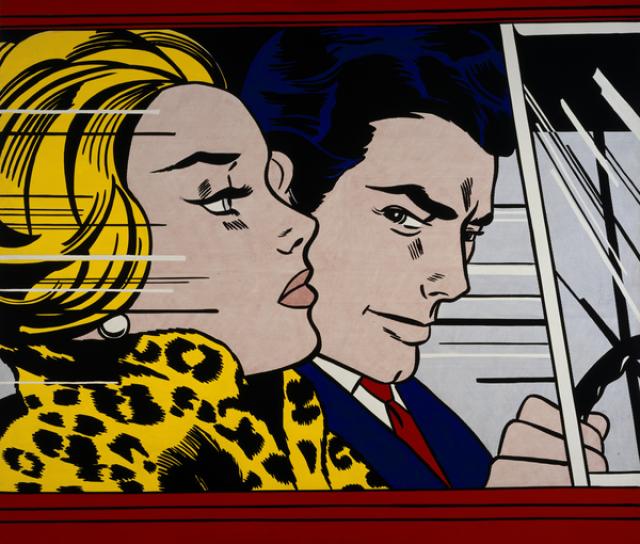Acrylic
Acrylic paint is a fast-drying medium composed from pigment particles held in an acrylic-polymer emulsion. Dissolvable in water, it can be applied in thick streaks or thin washes and is known for its vibrancy of colour. Famous artists exploring acrylic paint include David Hockney, Damien Hirst, Tony Swain and Phyllida Barlow.

The History of Acrylic Paint
Acrylic paint is relatively new art material, created and popularised in the twentieth century. The earliest versions were developed for industrial use in the 1930s by the German chemical company BASF, made from an acrylic resin dispersion. In 1946, American artist and paint manufacturer Sam Golden (the later founder of Golden Acrylics) and his uncle, the artist Leonard Bocour, developed an acrylic, plastic based paint known as Magna Paint in New York. In contrast with oils, it had a synthetic vibrancy of colour and a glossy finish; these qualities made acrylic paint popular with a new brand of experimental artists searching for ways to break with tradition in favour of modernity. Water based acrylics were later invented in the 1950s and have remained popular since.
Spiritual Colour
Some of the first artists to experiment with acrylic paint were the Abstract Expressionists of the 1950s and 1960s, who embraced the versatility of acrylic paint, applying its characteristically bold colours in loose washes or impasto areas of texture. American painter Helen Frankenthaler poured diluted washes of bold colour onto unprimed canvas, letting it soak deep into the core of the fabric and lend it a glowing luminosity, as seen in Saturn, 1962. She wrote, 'There are no rules. That is how art is born, how breakthroughs happen.'
Acrylic paint continued to prove popular with many American abstract artists of the 1960s, including the Colour Field Painters Morris Louis, Jules Olitski and Barnett Newman, who, like Frankenthaler, invested an inner, spiritual light into their canvases. This language was expanded into three-dimensions by American sculptor Anne Truitt, who transformed her totemic, wooden structures into columns of light by applying layer upon layer of acrylic paint.
Acrylic and Pop
Acrylic paint was a popular choice for Pop Artists throughout the 1950s and 1960s. In contrast with the Abstract Expressionists, who embraced the spirituality of colour, Pop artists instead sought to replicate the vivid, eye-catching colours of popular culture and advertising with acrylic paint’s bold synthetic flatness.
American painter Roy Lichtenstein worked with Magna Paint to replicate the bright, heightened colours of imagery from popular culture. In the Car (1963) is one of his most famous early works, which combine flat areas of pure colour and the pixelated ben-day dot patterns of comic strips with a slick, clean language that appears almost entirely machine-made. British Pop artist David Hockney adopted acrylic paint when the medium was in its infancy, contrasting areas of flat, pure colour with textural passages, as seen in the richly varied Rocky Mountains and Tired Indians, 1965.
Contemporary Uses
In contemporary times the great versatility of acrylic paint has made it a popular choice for a huge range of artists. British artist Damien Hirst’s spot paintings are made with flat, carefully applied patches of paint to lend them the clinical purity of manufacturing, as seen in Controlled Substances Key Painting (Spot 4a), 1994. By contrast, British painter Tony Swain applies both textural and highly detailed passages of acrylic paint in dreamy, atmospheric colours across pre-existing sheets of newspaper, both drawing out and transforming the original imagery, as demonstrated in Unpaired, 2004. The British sculptor Phyllida Barlow has embraced acrylic paint to produce many of her works on paper, echoing the rugged, expressive language of her sculptures onto a two-dimensional plane.





